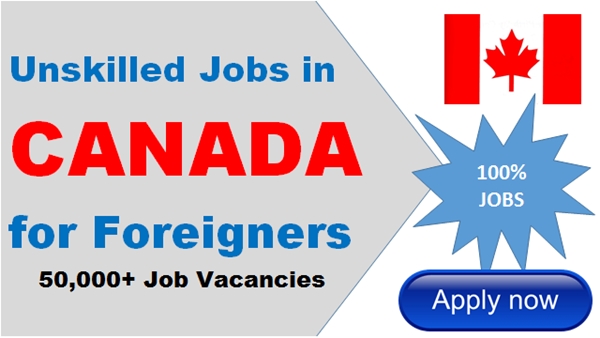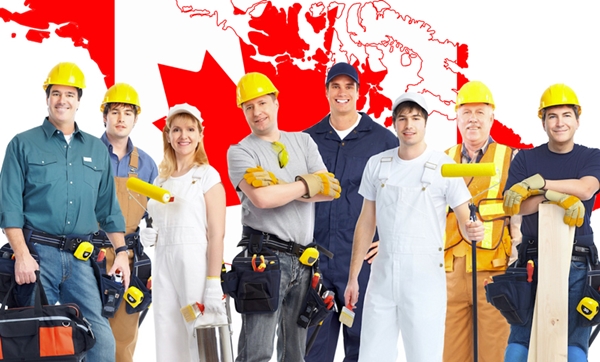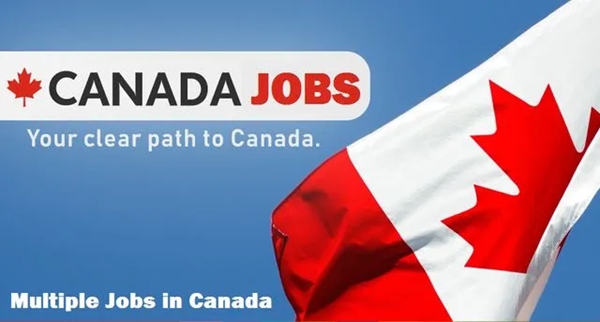
Unskilled Jobs in Canada with Visa Sponsorship with over a million vacancies available, Canada is set to welcome foreign nationals from across the globe to fill labor gaps across sectors. While the major emphasis is often placed on the dire need for skilled workers to take up vacant high-level posts, it should not be forgotten that unskilled workers play a huge role in the Canadian economy. Canadian employers are desperately in need of immigrants with a variety of skill sets to keep the wheels rolling.
Steps to Apply for Unskilled Jobs in Canada with Visa Sponsorship
Find Out More About Jobs in Canada with Visa Sponsorship
Regarding sponsorship, you should note that Canadian employers won’t always sponsor you in the literal sense. They will, however, apply for a Labour Market Impact Assessment (LMIA) from Employment and Social Development (ESDC) Canada for you.
What is a Labour Market Impact Assessment (LMIA)?
An LMIA is a document that gives a Canadian employer the green light to hire a foreign worker. A positive LMIA will conclude that there is a need for a foreign worker to fill the job.
If you are set on working in Canada via visa sponsorship, you’ll have to find an employer keen to sponsor your visa application and carry you through the process.
If you do find an employer that will fully sponsor your visa, here are some of the responsibilities they could agree to:
- Paying for your airline ticket
- Helping with accommodation arrangements
- Offering medical insurance for a set amount of time
- Helping you sign up for a provincial occupational safety insurance plan
Top tip: Look out for global corporations or businesses situated in remote areas with a major skills drain.
Find Out if There’s a NOC Code For Your Job
Canada initially focused its immigration efforts on National Occupational Classification Code (NOC) 0, A, and B professions. NOC 0 includes management jobs, NOC A is for jobs that call for a university degree, and NOC B includes trades and occupations that usually require a college diploma or apprenticeship training.
It should, however, be noted that there are actually several options for immigration to Canada if your occupation falls under NOC codes C or D. Economic immigration is a great tool for solving labor shortage issues. NOC C jobs often require a high school diploma. NOC D, on the other hand, would require on-the-job training. NOC C occupations include butchers, truck drivers, and food service workers. Examples of NOC D occupations include fruit pickers, cleaning staff, and oil field workers.
What is the National Occupational Classification (NOC) system?
Canada uses the National Occupational Classification (NOC) system to determine an occupation’s skill level. This system will, however, switch to the Training, Education, Experience, and Responsibilities (TEER) system towards the end of 2022.
Some Unskilled or Semi-skilled Jobs in Canada
- Nurse aides, orderlies, and patient service associates (NOC 3413)
- Caregivers (NOC 4411 and NOC 4412)
- Butchers, meat cutters, and fishmongers-retail and wholesale (NOC 6331)
- Food And beverage servers (NOC 6513)
- Transport Truck Drivers (NOC 7511)
- Construction trades helpers and laborers (NOC 7611)
- General Farm Workers (NOC 8431)
- Fish and seafood plant workers (NOC 9463)
- Laborers in food, beverage, and associated products processing (NOC 9617)
- Machine Operators (Major NOC Group 94)
Find Out How to go About Getting a Job in Canada
Remember; To be able to work in Canada, you’ll need a job offer and a Canadian work permit. Job and labor shortages are filled through the Temporary Foreign Worker Program (TFWP), which has special worker streams for caregivers, agriculture workers, and other low-wage workers. If you have a job offer in Canada, you can apply for a Canadian work permit through one of these streams.
Find a Program that Matches Your Needs
Quite a few provincial programs allow foreign employees to apply for residence in Canada as unskilled, low-skilled, or semi-skilled workers under the terms of their employment contracts. The industries or sectors in which these employees are needed vary depending on the province in which they live. You may apply to the Temporary Foreign Worker Program if you want to live and work in Canada for a short period.
Let’s go through all the program options for unskilled workers.
Temporary Foreign Worker Program (TFWP)
The Temporary Foreign Worker Program (TFWP) was established to aid Canada’s economic growth by bridging the gaps in labor shortfalls by employing skilled foreign workers. Canadian employers use this program as a great source of assistance when hiring temporary foreign workers.
Home Care Provider Pilot
Home care providers, you’ll find two immigration pilots for you in Canada.
If you work as a home care child provider, you’ll help parents take care of their children. You may also have to assist with household duties. Jobs that fall under this category include:
- Babysitter
- Nanny
- Au pair
- Child care live-in-caregiver
- Child care provider – private home
- Foster parent
If you choose to work as a home support worker, your work involves assisting people with disabilities, the elderly, and those recovering from an illness or operation. Duties may include feeding, bathing, preparing meals, and administering medication. Jobs in this category include:
- Housekeeper
- Home support worker
- Personal care attendant – home care
- Doula
- Family caregiver
Seasonal Agricultural Worker Program
Another stream to obtain an employer-specific work permit and work in the top LMIA available occupations up north is the Seasonal Agricultural Worker Program. This program allows Canadian companies to employ temporary foreign workers if Canadians are unable to fill the positions. An employer can hire a foreign worker for eight months. You would be eligible for a work permit under the agriculture workers program if you’re from a participating Caribbean country.
Participating countries include:
- Mexico
- Anguilla
- Antigua and Barbuda
- Barbados
- Dominica
- Grenada
- Jamaica
- Montserrat
- St. Kitts-Nevis
- St. Lucia
- St. Vincent and the Grenadines
- Trinidad and Tobago




